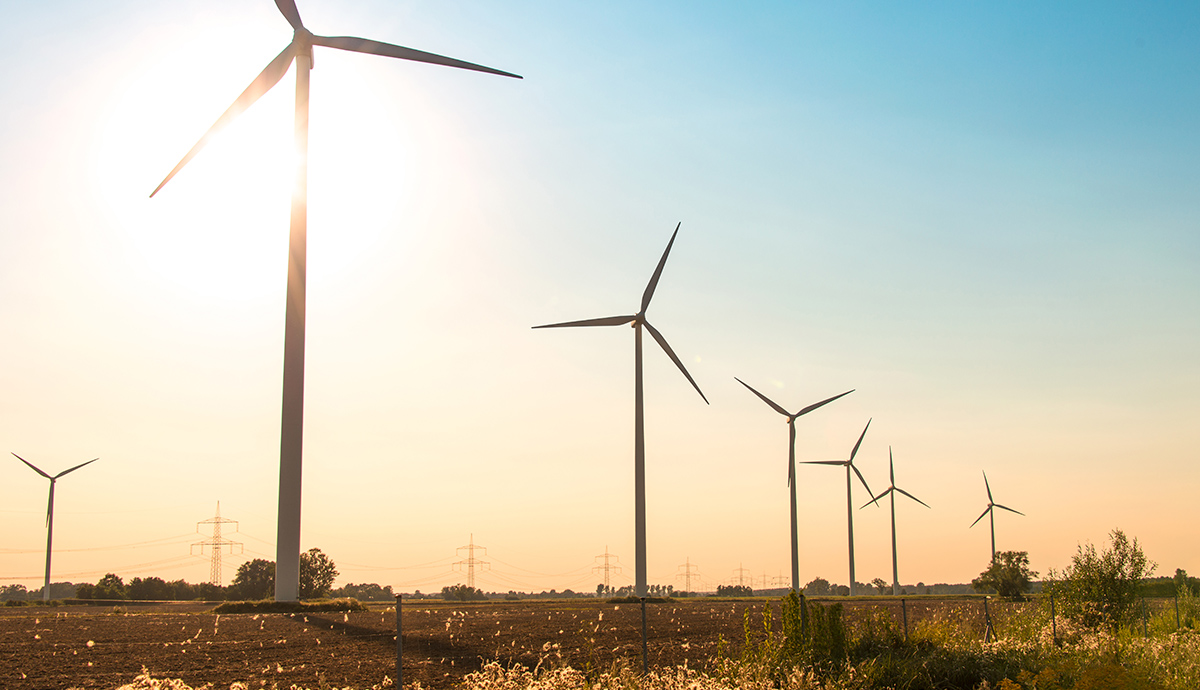Wabash Valley Power Alliance has a decarbonization strategy that balances our members’ needs for reliable and affordable electricity with environmental responsibility. Through a combination of the addition of zero-emission resources, elimination of carbon in our power supply portfolio, and edge-of-grid technologies, we will be reducing our carbon emissions by 50% by 2031, 70% by 2040, and will target net-zero carbon emissions by 2050.
Investing in innovative approaches to energy management is anything but new to Wabash Valley Power Alliance. For decades, we’ve been steadily reducing our dependence on any single fuel source by enlisting a deliberately different combination of resources on both the supply and demand sides of the business: innovative demand response and energy efficiency programs combined with farsighted investments in renewable energy generation via wind, solar, and landfill gas.
Today, the 23 member co-ops of the Wabash Valley Power Alliance stand at the crossroads of affordability and environmental stewardship—and at the forefront of diversified fuel portfolios. We’re committed to the steady, step-by-step approach that balances our members’ needs for lower-cost electricity with an “all-of-the-above” fuel source strategy that allows us to tap into innovative energy technologies as they come online—and invest more as they become more affordable.
1985
Demand response programs began helping our members beat the high-cost peak periods of energy usage during the day. These demand response initiatives continue today through our PowerShift program.
2002
Partnered with Waste Management, Inc., to build our first landfill gas plant with the construction of Twin Bridges II in Danville, Indiana. We now have 15 landfill gas units capturing dangerous methane and generating 53 MW of electricity.
2006
Signed our first contract for wind-generated energy (8.4 MW) with AgriWind in Illinois.

2008
Signed our second wind-energy contract for 21 MW with Story County located in Iowa.
2010
Launched our Power Moves energy-efficiency programs that today account for nearly 2% of our overall supply needs, reducing the need to build costly baseload power plants. To date, over $35 million dollars have been returned to both businesses and residential members served by our distribution co-ops.
2011
Signed our third wind energy contract for 10MW with Pioneer Trail Wind Farm located in Illinois.
2015
Closed our 210 MW coal gasification plant in Terre Haute, Indiana. This capacity was replaced by a combination of resources, including wind and solar.
2017
Eliminated a 270 MW long-term coal contract that was replaced with solar and wind energy.
Launched our Co-op Solar community solar initiative by developing five local solar array sites in the communities we serve.
2018
Contracted a purchase for 200 MW of energy generated by the Speedway Solar project in Shelbyville, Indiana, to come online in 2023.
Purchased an additional 25 MW of energy from Meadow Lake V wind farm in northern Indiana.
Purchased 75 MW of wind energy from EDP Renewable’s Meadow Lake VI wind farm in northern Indiana.
2019
Expanded the Co-op Solar program with three new community solar arrays, bringing our total number of owned solar arrays to 8 and providing an additional 7 MW.
2020
Purchased 100 MW of power from the Harvest Ridge wind farm in Illinois.
2021
Contracted to purchase 99 MW of energy from Dressor Plains Solar and 99 MW from Prairie State Solar, both in Illinois.
2022
Dressor Plains Solar and Prairie State Solar completed and began generating electricity in May.
2025
Coal-based contract for 55 MW expires.
Projected retirement date for Gibson Unit 5 coal plant in Owensville, Indiana, currently providing 156MW of baseload energy.
*Wabash Valley Power supports renewable energy by owning landfill gas and solar generation and purchasing the output from wind, solar, and biogas facilities. The environmental attributes associated with this generation are sold separately to third parties, and therefore Wabash Valley Power does not claim the generation as renewable within our own supply portfolio.

